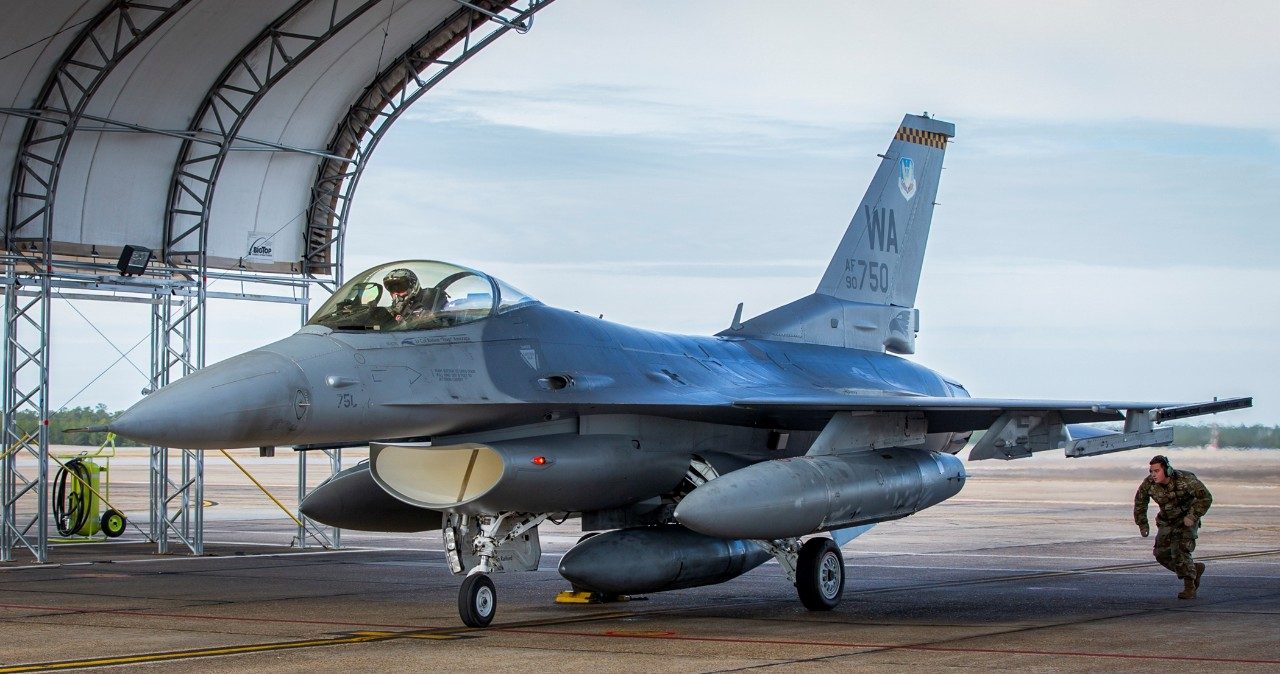F-16s to Be Modified for Autonomous Testing
Eglin Air Force Base Article By Capt. Lindsey Brewer & Samuel King Jr.
EGLIN AIR FORCE BASE, Fla. - The 96th Test Wing and 53rd Wing welcomed the first three F-16 Fighting Falcons ready to take part in the Viper Experimentation and Next-gen Operations Model – Autonomy Flying Testbed program.
VENOM-AFT is designed and funded to accelerate testing of autonomy software on crewed and uncrewed aircraft. VENOM-AFT complements the Autonomy Data and AI Experimentation proving ground at Eglin and informs the Collaborative Combat Aircraft program and other autonomy developers.
The next step for the VENOM program is to modify the F-16 aircraft into test platforms to rapidly evaluate autonomous capabilities.
“The VENOM program marks a pivotal chapter in the advancement of aerial combat capabilities. This transformative program holds the potential to redefine air combat paradigms by fostering novel autonomous functions for current and future crewed and uncrewed platforms,” said Maj. Ross Elder, VENOM developmental test lead. “We look forward to the culmination of years of engineering and collaboration, as VENOM leads a measured step towards a new age of aviation.”

Similar to F-16 and F-15 testing at Eglin, the VENOM program will undergo developmental and operational testing via the 40th Flight Test Squadron and the 85th Test and Evaluation Squadron.
“Having both DT and OT pilots working and flying from the same location allows for daily collaboration and reduces the stove piping of knowledge and lessons learned,” said Lt. Col. Jeremy Castor, VENOM operational test lead.
During these tests, the pilots will be in the cockpit to monitor the autonomy and ensures flight and mission systems test objectives are met.
“It’s important to understand the ‘human-on-the-loop’ aspect of this type of testing, meaning that a pilot will be involved in the autonomy in real time and maintain the ability to start and stop specific algorithms,” said Lt. Col. Joe Gagnon, 85th TES commander. “There will never be a time where the VENOM aircraft will solely ‘fly by itself’ without a human component.”
Operators will provide feedback during modeling, simulation, and post-flight to the autonomy developers to improve performance over time and ensure the autonomy is making the appropriate decisions prior to and during flight.
The goal of the VENOM program is to enable the Air Force to rapidly iterate and expand the body of knowledge for potential autonomy and payload solutions.
“With regards to VENOM-AFT, rapid tactical autonomy development focuses on ‘speed-to-ramp,’ meaning, go as fast as you can, safely, to ensure we get CCA flying as quickly as possible,” said Gagnon.




